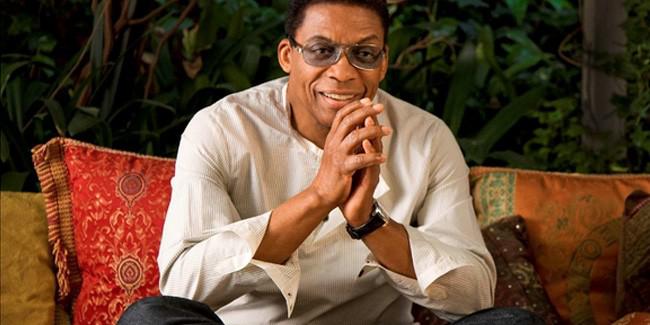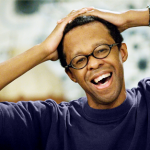To a jazz pianist like me, who was deep in the learning phase in the ’70s, Herbie Hancock was a musical and industry force who had to be reckoned with. He was ubiquitous and he spanned so many different movements and stylistic shifts that any aspiring jazz musician had to deal with his impact. As a keyboardist, composer and bandleader, he reflected the mutations of jazz in his era, and even though Hancock was never a primary influence or inspiration for me, he could not be ignored.
I figured his new memoir Possibilities, co-written with Lisa Dickey, would offer a good look at what went on in jazz and jazz-related cultural movements in the ’60s and ’70s. I also thought that it might shed some light on why jazz is so fucked up nowadays, and whether icons from the ’70s like Hancock and others are actually part of the problem. This is not a review of the book, which is a smooth and easy read, but many fascinating issues cropped up as I went through Possibilities, and it might be interesting to touch on a few of them.
Born in Chicago, the 20-year-old Hancock was a work in progress when he moved to New York in 1961, but soon came to prominence playing in Miles Davis’ “Second Great Quintet,” the one that recorded classics like Miles Smiles (1967). One thing the book brought home to me was how much of a radical discontinuity the ’60s actually were. Whereas in earlier eras a jazz musician would have had just a few directions to choose from, in the ’60s, everything — hard bop, post-bop, modal jazz, the beginnings of jazz rock and, of course, the many permutations of free jazz, among other styles — was on the table.
It’s interesting to watch Herbie navigate between all the choices available to him while learning from everything, and it’s fun to watch the push-and-pull in his psyche between the fact that he is an acoustic jazz player but also an intense tech geek. (His college degrees were in electrical engineering and music.) I was really taken by the respect he shows for the great saxophonist Eric Dolphy, even going so far as to say that what he learned about freedom from playing with Dolphy informed how he functioned in Miles Davis’ rhythm section. Along the same lines, kudos to Hancock for giving credit where credit is due and talking about how much he owes to trumpeter Donald Byrd. He was Hancock’s mentor in the early part of his career, both musically and business-wise. If there is a message here for younger musicians, it is that you need a coach.
While we get to see him earn his stripes in the ’60s, the crux of Hancock’s legacy is a ’70s-type thing. As great as his experience with Miles Davis must have been for Hancock, the sense I get from the book is that it served as a preliminary type of thing for him, to get to the meat of what he was about later, in his own groups. (He also made some important, lifelong friends there, including saxophonist Wayne Shorter, double-bassist Ron Carter and drummer Tony Williams.)
It seems to me that Herbie feels he reaches his creative ascendancy when he combines his instrumental prowess with his tech-geek propensities, hence the periods of his most groundbreaking musical idiom, apart from his acoustic albums of the ’60s.
He frames Mwandishi (1970), his first step into experimental jazz fusion, in the language of an out-of-body. transcendental peak experience. He talks about the band on this record in the same way a lot of avant-garde players talk about what they do — the idea that they are not playing the music, the music is playing them. Page after page shimmers with his mystical descriptions of what it was like to play in this band, and I have no doubt that it was a spiritual apotheosis for him.
Fast forward to Head Hunters (1973). Some of the space and avant trappings of Mwandishi are gone, and we are left with a band that innovated many aspects of what we now know as jazz-funk fusion. It was commercially successful, unlike Mwandishi. We then learn about the making of “Rockit,” his groundbreaking 1983 hip-hop-meets-jazz-fusion single. There’s a great quote by Hancock about how it came together: “And the ironic thing is to this day I still don’t know much about hip-hop music. I just happened to be at the right place at the right time with the right people.”
The one part of Possibilities that comes off as really weak is how Hancock reacts to his critics, whether they’re saying that he’s sold out or that the jazz-funk he does is lame. He reacts, so I guess the criticisms stung somewhat, but not a lot. Answering his critics would have been more interesting to read if he were completely bitter about it — which he is not — or if he’d taken a completely militant stance about it, like “fuck you, I will do whatever the fuck I want to do.” His rebuttal to people who say he got into fusion just for the money is that Head Hunters and “Rockit” were risks and could just as easily have been failures. There is an element of truth to that, but it’s also obvious that he wanted no part of a journeyman jazz life. That’s not explicitly stated in the book, but he clearly had an intense thirst for at least some degree of showbiz fame — along with more money than is to be found in a regular jazz career.
That is in no way meant as a criticism — I know very few artists who don’t have a taste for some type of fame — my only complaint is that Hancock’s defense is so Mickey Mouse. At times, it sounds like he’s trying to justify his own decisions to himself — and his justifications can seem as simplistic as some of the criticisms thrown at him. Hancock seems to really know who he is, and seems able to make informed decisions based on his own instincts about what’s best for him. He is obviously a bright guy, so he has to know that if you shake it up a little, not everyone will go along with it.
Elsewhere, he lets us in on his personal life, like his abuse of cocaine and crack, and his religion, Nichiren Buddhism. It’s always good to see what makes an artist tick and what obstacles they’ve had to overcome.
The back of the book features a quotation from Miles Davis: “Herbie was the step after Bud Powell and Thelonious Monk, and I haven’t heard anybody yet who has come after him.” That was from Miles: The Autobiography, co-written with Quincy Troupe and published in 1989, two years before Davis died. With those words, Miles locates Herbie in the pantheon of geniuses like Powell and Monk, as though he’d picked up their mantle. But it seems to be a disconnected and shallow comparison, seeing as this is a book by a tech geek who really seems not to want to be seen in the light that Miles Davis painted him in. Powell and Monk were willing to die for the webs that they spun on the piano. Hancock is not, that much is obvious from this book. As brilliant a pianist as he can be, his acoustic work has none of the ultimate existential angst that theirs had. They were the piano music they played, but Hancock is not; he isn’t willing to make that ultimate sacrifice.
But that is how Hancock wants it. He developed a completely different character for himself in the music that was of the ’70s, could have only come into existence in the ’70s, and was of a piece with the environment that existed in the ’70s. He is part jazz instrumentalist, part technophile and part ambassador to the mainstream, and a decent part of the music he did was brilliant. But that Davis quotation is a bit of a reach.
There is a lot of honesty and clear insight in Possibilities and it reinforced a lot of what I already thought of the Hancock phenomenon. It’s a fascinating look into a paradigm, that of the mainstream jazz star, that just might have played itself out.








